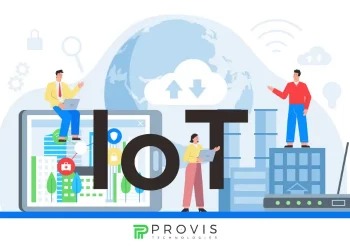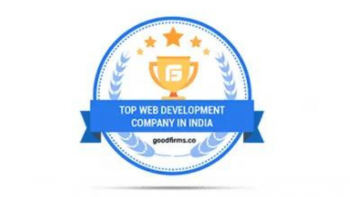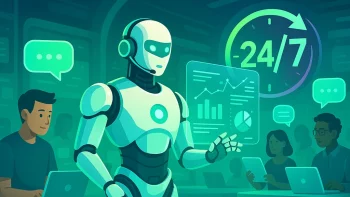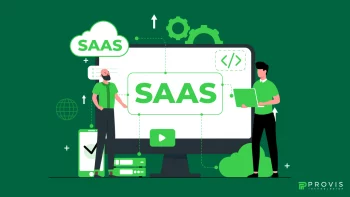Internet of Things (IoT) technology has changed the reality humans previously thought belonged to the future. During the past ten years, IoT Software Development Services have evolved as a vital transformative technology, connecting digital systems with physical environments.
Devices combined with IoT systems now transform traditional operations between connected devices and businesses in smart homes and industrial sectors.
Each IoT device requires multiple software solutions to operate as a system to collect data for processing and transmission. Moreover, an IoT software development service guarantees a smooth workflow through its secure integration while promoting operational efficiency. Therefore, in this Provis Technologies guide, you will explore IoT software development in detail, covering its components, challenges, best practices, and future trends.
Understanding IoT Software Development
The IoT software development service requires developers to create applications which operate IoT devices to acquire data and distribute this information between connected platforms for analysis.
The software maintains effective communication links between devices and cloud-based systems.
However, the system of an IoT custom application development company contains:
- Embedded Software
- Middleware
- Cloud Platforms
- User Application
Embedded Software
The core necessity of IoT devices depends on embedded software that operates from hardware to control operational behaviors. This element within the system handles the activities of sensors alongside actuators and control communication channels.
Since IoT devices obtain power from battery sources, their dedicated software runs as a light program for maximum energy performance.
Middleware
The middleware functions as a connecting link between IoT devices and cloud facilities. The system enables data translation while managing devices and standardizing connectivity operations.
Further, the numerous communication protocols utilized by IoT devices require middleware to achieve data transmission compatibility between devices.
Cloud Platforms
IoT software development service is heavily dependent on the core of cloud computing. The problem with the storage, analysis, and processing of IoT data is that it needs to happen in real-time.
This data requires appropriate handling by the cloud platforms. To manage their connected ecosystems, companies have been using services like AWS IoT, Microsoft Azure IoT and Google Cloud IoT. They provide a flexible, secure and advanced analytical experience to extract useful insights from IoT data.
User Applications
An IoT software development service should have intuitive user interfaces. Therefore, mobile and custom web application development companies use dashboards that show how to use and control IoT devices.
Real-time status updates, alerts, and automation features come with these applications that help users to interact with their smart devices without hassle.
Benefits of IoT Software Development Services
Real-Time Data Analytics
The data generated by IoT devices amounts to gigabits every second. By using advanced analytics, businesses can use real-time data to enable data-driven decision-making.
For instance, fleet management systems using IoT can track the performance of vehicles, fuel consumption, and route efficiency in the transport industry to optimize operations and cut costs.
Enhanced Customer Experience
Innovative devices deliver personal experiences to the users. From smart thermostats that change the temperatures based on the users’ preferences to connected healthcare devices that monitor vital signs and inform doctors in emergencies, IoT software development service makes living more convenient.
Cost Savings
IoT solutions encourage companies to save money by maximizing resource usage. Moreover, smart grids and sensors powered by IoT are ideal for monitoring energy consumption in the energy sector to minimize waste and maximize efficiency.
At the same time, IoT software-based predictive maintenance not only keeps equipment out of failure mode but also keeps operations running smoothly.
Improved Security and Compliance
A modern IoT custom software company combines sophisticated security infrastructure for the security of user data and for customer compliance with industry regulations.
With cyber threats growing, IoT developers are most concerned with encryptions, authentication devices and secure communication protocols to protect information.
Challenges in IoT Software Development
As IoT is providing numerous benefits, software engineering consultancy is facing some issues as well.
Security Risks
The biggest concern currently continues to be security in IoT development. Hackers now have more entry points to exploit, with more than billions of devices connected to the internet.
Nevertheless, most IoT devices do not have adequate security measures, so they are prone to attacks. These risks can be mitigated through the implementation of strong encryption, access controls and secure firmware updates by developers.
Compatibility Issues
In an IoT software development firm, there are different manufacturers and devices and different protocols to communicate inside an ecosystem.
It is a difficult task to ensure seamless integration between devices. In order to enhance compatibility, the protocols must be standardized.
Scalability Constraints
Due to businesses continuing to expand their IoT infrastructure, handling massive data and devices becomes more and more difficult. This problem is eliminated if you use scalable cloud solutions and edge computing technologies to process the data in a software outsourcing company.
Power Consumption
Since many IoT devices are powered by limited battery power, the software solutions for these IoT devices should be energy efficient. Code needs to be optimized along with power communication protocols. At the same time, the energy of the device must be smartly managed to extend battery life.
Best Practices for IoT Software Development Service
Prioritizing Security
From the earliest phases of development, security should be integrated. There are sophisticated encryption mechanisms, secure boot implementations, and firmware updates all over the place that make it harder to compromise with IoT ecosystems.
Finally, before deployment, developers should run through a comprehensive test to uncover vulnerabilities.
Selecting the Right Tech Stack
A good amount of thought has to go into choosing the right programming languages and the right frameworks for writing IoT software.
Moreover, you can use Python, C, and Java, depending on the device’s requirements. They have secured scalable cloud platforms that give clients smooth data management and real-time analytics.
Optimizing for Low Power Consumption
The use of lightweight communication protocols, such as MQTT and CoAP, makes it easier for developers to enhance energy efficiency. Also, efficient data compression techniques help reduce power consumption so that the IoT software development service lasts longer with limited battery resources.
Ensuring Seamless Integration
It is necessary to communicate between the IoT devices as simply as possible, without any compatibility issues. HTTP, MQTT and WebSockets provide standardized connectivity protocols.
Moreover, integrating with third-party services subsequently further simplifies the building of API-based architectures.
Testing for Performance and Reliability
The testing process of IoT systems needs to be thorough to demonstrate their functionality in actual operational situations.
Different tests, such as stress testing, security inspections and load tests, identify points of failure to strengthen system performance.
Future Trends in IoT Software Development Agency
AI-Driven IoT Solutions
The capabilities of IoT are enhanced by Artificial Intelligence (AI) and Machine Learning (ML), which allows predictive analytics, intelligent automation and real-time decision-making.
However, AI-powered IoT devices can not only detect patterns but can also identify anomalies and optimize performance without humans.
5G-Powered IoT Networks
Using 5G technology in IoT setups will create better network connections that combine faster data transmission with shorter response times.
The development will transform independent vehicle technologies, urban infrastructure and telehealth operations.
Blockchain for IoT Security
IoT security is making use of blockchain technology for decentralized authentication, secure transactions and data integrity. Blockchain can make it easier for IoT ecosystems to become less susceptible to cyber threats.
Edge AI Processing
The result of Edge AI Processing is that data will be processed in real-time at the device level via edge computing and AI. With this approach, latency is reduced, which helps reduce the time taken to develop critical applications.
The Bottom Line
Smart connectivity based on an IoT software development service is the core of innovation in various industries. With businesses and users increasingly relying on IoT solutions, there will be an ever-increasing demand for secure, portable, scalable and intelligent software.
Having understood the components, challenges and best practices of a custom software development company, businesses can come up with cutting-edge IoT solutions that will define the very future of technology. As the world evolves into one more connected and automated future, IoT software development sits at the center.
Written By
Author's Picks
- The Role of Machine Learning in Healthcare Software Development
- 15/02/2025
- AI in Software Development: Benefits and Challenges
- 18/02/2025
Categories
- AI for Startups
- AI in Web Development
- AI Integration
- AI Platforms
- AI Prompt
- AI Tools
- AI Trading Software
- Android App
- Android vs iOS Development
- Angular
- API
- API Development
- App
- app development
- App Idea
- App User Feedback
- Application
- Artificial Intelligence
- Audit Services
- Automotive Industry
- Awards and Recognition
- Business Consulting
- Business Website
- Chatbots
- CRM
- CRM for Financial Advisors
- Custom CRM
- Custom SaaS
- Custom Website
- Customer Service
- dashboard design
- Developing a Mobile App
- Digital Business
- E-commerce
- EMR Integration
- Finance
- Financial Advisors
- Financial Advisors
- GIT
- Health Insurance
- iOS App
- iOS App Development
- IoT Mobile App Development
- IoT Platforms
- IT Audit Services
- IT Consulting
- IT Strategies
- Java Development
- Laravel
- Lean Canvas
- Learning Management System
- Logistics Apps
- Mobile App Development
- MVP
- Native App
- News Aggregator Site
- OTT
- Outsourcing IT
- Payment Gateway
- predictive analysis
- Product Launch Strategy
- Progressive Web App (PWA)
- Prototype
- Recommender Systems
- Ruby
- SaaS
- SaaS Application
- SaaS Business
- SaaS Company
- SaaS Development
- SaaS Product
- SaaS Project
- Sales Funnel
- SEO
- Shopping Cart
- Software Development
- SSL and TLS
- Startup Checklist
- Technology
- Tetradic Color Scheme
- UI/UX Design Company
- Unit Testing
- User Flow
- User Testing
- Web Development
- Web Performance Optimization
- website Maintenance Services
- Website Migration Service
- Website Speed Optimization
- WooCommerce
- WordPress





